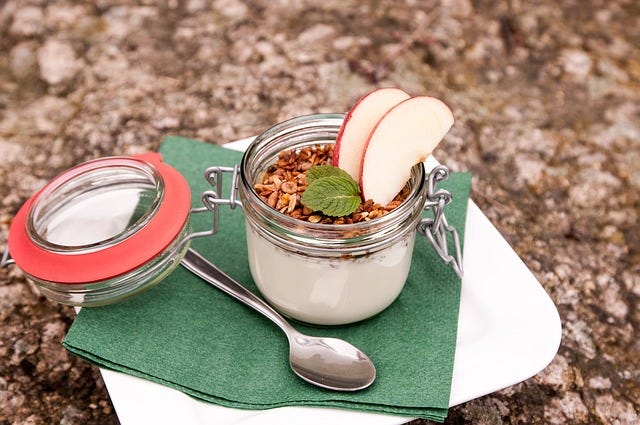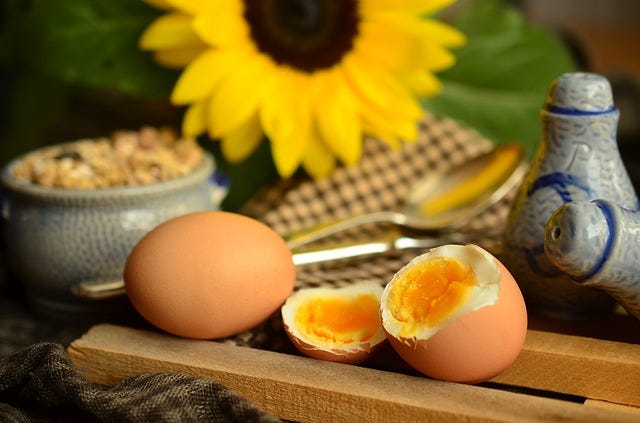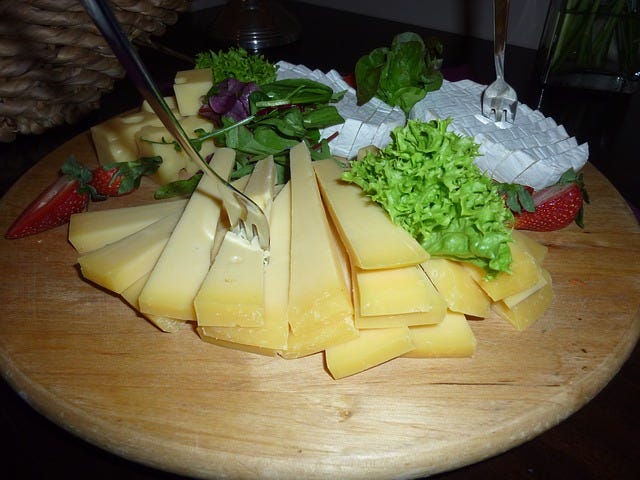
Eat Fat, Don’t Carbitrate!
This is the motto that is followed by those who decide to follow the ketogenic diet.
Which then means following a low carb diet like Atkins
In fact, the thinking behind the ketogenic diet claims is that you need to eat fat to lose fat.
Sounds pretty cool, right?
Since the ketogenic diet has been marketed for diabetics or anyone who wants to lose a few pounds quickly I want you to try some recipes that are right for you!
What Can I Eat on the Ketogenic Diet?
Index Article
- What Can I Eat on the Ketogenic Diet?
- How many carbohydrates can I eat on the ketogenic diet?
- Ketogenic breakfast
- 1. Cabbage and Eggs Benedict
- 2. Chia pudding
- 3. Muffins with vegetables and cheese
- Lunch
- 1. Superfood soup
- 5. Southern Chicken Salad
- Ketogenic snacks
- 6. Cheese Crackers
- 7. Avocado wrapped with bacon
- 8. Goat cheese balls
- Dinner
- 9. Steak with mushrooms
- 10. Roast Chicken and Cajun Spaghetti Squash
- 11. Baked salmon
- Sweets on the ketogenic diet
- 12. Black and white peppermint bombs
- 13. Almond and pistachio bombs

The ketogenic diet has also been referred to as a high-fat low-carb diet (LCHF). So, as you can imagine, you’ll be eating healthy fats instead of eating carbohydrates.
How can this affect your daily calorie intake?
The standard acceptable ranges of macronutrient distribution (AMDR) for most people are composed as follows:
45–65% of calories should come from carbohydrates
20–35% should come from fat
10–35% should come from protein
But the breakdown of macronutrients in the ketogenic diet is completely different.
Here are the ideal macronutrient intakes for a ketogenic diet:
70% of calories come from fat
25% protein
5% should come from carbohydrates
What happens when the macronutrient from the carbohydrate switches to fat?
You see, when you eat carbohydrates, your body processes them like sugar (because all carbohydrates are sugars) and uses glucose as energy.
By choosing to get plenty of glucose, especially if you eat a lot of carbohydrates, which most people do, the fats in your body are never used as energy and are stored as fat.
[ninja-inline id = 3386]
However, when you lower your carbohydrate intake and therefore lower the sugars in your body, you are forcing your body into a state known as ketosis.
During ketosis, the body believes that there is a shortage of food that produces ketones in the liver in the world to use body fat as fuel. That’s where the diet got its name from.
Instead of burning glucose and storing fat, the ketogenic diet relies on this production of fat-burning ketones as the main source of energy.
The fewer carbohydrates you eat, the faster it sends your body towards the ideal ketogenic state. But we can’t cut out carbohydrates completely, because our body needs carbohydrates in order to function properly.
How many carbohydrates can I eat on the ketogenic diet?
In the ketogenic diet, it is recommended to eat 20–30g net carbs per day, but BodyBuilding magazine says ketosis can be achieved “when you bring your carbohydrate levels to about 50 grams per day or less”.
People looking to lose weight quickly should cut their net carbs to less than 15g per day to work towards ketosis within 1 week.
It is therefore necessary to understand how many total net carbohydrates to consume.
Net carbohydrate is a carbohydrate that is subtracted from the fiber.
Let’s use 150 grams of cabbage as an example here.
There are 6.7g of total carbohydrates and 1.3g of fiber in 150 grams of cabbage.
So you end up with 5.4g of net carbs.
When starting the diet ketogenic diet is difficult to stay within the net carbohydrate limits.
So now I present to you my 13 favorite ketogenic recipes!
Ketogenic breakfast
1. Cabbage and Eggs Benedict

Eggs Benedict i.e. poached eggs are perfect but are usually served with a carbohydrate such as a savory muffin.
Well, this recipe from The Nourish Caveman replaces the carbohydrate with organic kale for a superfood breakfast.
Melt 1 tablespoon of butter in a small pan.
Add 1 peeled garlic clove to the pan. Let it cook for about a minute.
Add 60 grams of raw cabbage, washed and chopped, to the pan. Cover with a lid and cook for about 5 minutes, stirring occasionally. Remove from the pan and keep warm.
While this cooking is taking place, separate one egg into two bowls. Add a whole egg to the bowl where the egg white is.
Add another tablespoon of butter to the pan and fry the eggs.
For the accompanying sauce, melt 2 tablespoons of butter with 1 tablespoon of coconut cream.
In a small food processor, add the remaining egg yolk, a pinch of salt, and a good grating of fresh black pepper. Add the egg yolk with salt and pepper to the butter/coconut cream mixture to integrate until it forms a smooth cream.
To serve, cover the plate with the cooked cabbage, add the fried egg on top, and then add a lot of hollandaise sauce, so the sauce you created is called.
2. Chia pudding
The chia seeds are high in protein, a healthy heart is the omega-3, and also contains tons of fiber that fill up at lunch. Plus, it’s incredibly versatile from a culinary point of view.
Here’s a good foundation to get started with:
Combine 30 grams of chia seeds with 1 cup of coconut milk and ½ tablespoon of your favorite sweetener.
Let the mixture rest in the refrigerator overnight and wake up to a delicious chia pudding.
Depending on your milk and sweetener choices (I love honey but maple syrup works well too), this breakfast has endless possibilities. Do you want to add almonds or coconut flakes? Go, you can do what you want.
3. Muffins with vegetables and cheese

A super easy low carb breakfast is veggies, eggs, cheese, and muffins.
I like to cook so I tell you what to do:
Spray a muffin pan with some cooking oil.
Scramble some eggs with milk, cheese, and vegetables
Pour some of the mixtures into the muffin pan.
Bake in the oven at 200 degrees for 20 minutes.
Lunch
1. Superfood soup
A soup back from work is one of the best ways to take a break from stress. Just filling a nice hot bowl seems to make me forget the expiration dates and emails.
So I like to show you a healthy recipe like this vegetarian soup.
Peel and finely dice 1 medium white onion and 2 cloves of garlic and place them in a pot with 30 grams of ghee or coconut oil. Cook over medium-high heat until they are a little golden.
Wash 150 grams of watercress and 200 grams of fresh or frozen spinach and set aside.
Cut 1 medium head of cauliflower into small florets and place it in the pan with the browned onion. Add 1 crumbled bay leaf. Cook for about 5 minutes and stir often.
Add the spinach and watercress and cook until wilted for about 2–3 minutes.
Pour 1 liter of vegetable broth and bring to a boil. Cook until the cauliflower is soft enough. Pour in a cup of coconut milk.
Season with salt and pepper. Remove from heat and make a cream with an immersion blender.
Serve immediately or serve cold. It can be kept in the fridge for up to 5 days.
5. Southern Chicken Salad
Salad is a great way to repurpose chicken leftovers.
You can cook this chicken salad by hand or use a food processor to make everything even.
Let’s see how it’s done.
Place 1 chopped celery, 1 chopped green onion, and 2 tablespoons of parsley into the bowl of a food processor. Chop them well. Transfer them to a bowl.
Add 150 grams of roasted chicken. Place the chicken in the bowl as well.
Also, insert a boiled egg already peeled and cut.
Add ½ tablespoon of dill, half a teaspoon of granulated garlic, 30 grams of mayonnaise, and 1 teaspoon of Dijon mustard.
Mix well with a large spoon or spatula. Season with kosher salt or coarse salt and freshly ground black pepper. Stir again.
Ketogenic snacks
6. Cheese Crackers
This self-made cheese cracker recipe from Healthy Living is perfect for you.
Preheat the oven to 180 degrees and line a baking sheet with parchment paper.
Take a few slices of hard cheese and place them on the baking sheet.
Bake for 10–12 minutes until the cheese is brown in color.
Use a paper towel to absorb excess oil.
When the cheese is cold it will be a great snack.
7. Avocado wrapped with bacon
When I stumbled upon this recipe on Oh Sweet Basil I thought: Crispy bacon wrapping a creamy avocado? Salty and spicy healthy fats? YES, THANKS.
Preheat the oven to 200 degrees and line a baking sheet with a sheet of parchment paper.
In a small bowl, mix together 30 grams of brown sugar and ½ to 1 teaspoon of chili powder, depending on how spicy you like things.
Cut an avocado in half and remove the stone. Slice it.
You will need 4–6 slices of bacon. Cut each slice into 3–5 pieces and wrap each piece around the avocado.
Roll the bacon around the avocado and toss with the sugar and chili mixture.
Bake in the oven for 10–15 minutes.
8. Goat cheese balls
These cheese balls are perfect with carrots or celery.
To make this ball look amazing:
Cut 120 grams of goat cheese into 7 pieces and form into balls.
Place 30 grams of pistachios and 30 grams of almonds in a vacuum bag and chop them.
Add salt, pepper, and any spices.
Spread the mixture on a plate and sprinkle your cheese balls before placing them in the fridge to cool.
Dinner
9. Steak with mushrooms

Thanks to Caveman Keto for this delicious mushroom steak recipe.
Here’s what you need to do:
Preheat the oven to 250 degrees.
Salt and pepper on both sides of the steak.
Heat a cast-iron skillet.
Melt 1 tablespoon of butter until it boils.
Cook the steak for 2 minutes on each side then transfers it to the oven for finishing.
Bake in the oven until the internal temperature reaches the desired level.
Once the steaks are done, set them aside and let them rest.
Add some port wine to the pan to deglaze and scrape off some of the remaining meat residues.
Add the mushrooms and a little cream.
Once the sauce has thickened, pour it over the steak and serve.
10. Roast Chicken and Cajun Spaghetti Squash
I’m a big fan of spaghetti squash to use in place of carbs.
Now I tell you what it is:
When raw, the pulp of spaghetti squash appears similar to that of other squash. If you still boil it whole for 45 minutes and then cut it in half, after removing the seeds, you can collect the pulp with a fork, which will come off forming many compact filaments really similar to spaghetti and noodles.
This is the recipe instead, found on Wicked Stuffed :
Take 4 pieces of small chicken breasts.
Add 2 tablespoons Cajun to the dressing and cover them.
In a large skillet, heat the oil over medium heat.
Add the chicken to the pan and put the lid on. Turn the chicken after about 5–10 minutes.
Meanwhile, heat 300 grams of cream, 3 tablespoons of butter, 1 teaspoon of garlic salt, 1 teaspoon of Cajun seasoning, and 1/2 teaspoon of cayenne pepper in a medium skillet over medium heat.
When it starts to boil, add the spaghetti squash and bring to a simmer over medium-low heat.
Once the chicken reaches 180 degrees, remove from the pan and let it rest for 5 minutes.
Take the noodles out of the noodle squash, add a little more cajun dressing and assemble the dish.
11. Baked salmon
The salmon is perfect in the ketogenic diet with all those omega 3. Perfect.
Here is one of the easiest salmon recipes:
In a glass bowl, prepare a marinade by mixing 2 chopped garlic cloves, 6 tablespoons of oil, 1 teaspoon of dried basil, 1 teaspoon of salt, 1 teaspoon of black pepper, lemon juice, and 1 tablespoon of chopped fresh parsley.
Place 2 salmon fillets on a plate and cover with the marinade. Marinate in the refrigerator for about 1 hour, turning occasionally.
Preheat the oven to 180 degrees. Place the fillets on aluminum foil, cover with the remaining marinade. Cook for 35 to 45 minutes.
Sweets on the ketogenic diet
12. Black and white peppermint bombs
Cocoa and mint go great together.
And they’re perfect for the ketogenic diet. Let’s see this recipe:
Combine 100 grams of melted coconut butter, 50 grams of shredded coconut, 1 tablespoon of coconut oil, and half a teaspoon of peppermint extract. Mix well and pour into a cream puff or muffin molds, filling them halfway. Put in the fridge to harden (about 15 minutes).
Mix 2 tablespoons of melted coconut oil 2 tablespoons of cocoa and powder. Remove the peppermint mixture from the refrigerator and pour the cocoa mixture into each mold over the peppermint. Refrigerate until the bombs harden.
Before serving, remove the bombs from the refrigerator and let them rest for about 5 minutes.
13. Almond and pistachio bombs

The recipe is taken from The Healthy Foodie :
Melt 1/2 cup of cocoa butter in a small saucepan, put on low heat or in the microwave, stirring often.
Mix butter with 150 grams of almonds, 1 cup of creamy coconut butter, 1 cup of coconut oil, 1/2 cup of coconut milk, 30 grams of ghee, 1 tablespoon of pure vanilla extract, 2 teaspoons of spices chai, 1/4 teaspoon of pure almond extract, and 1/4 teaspoon of salt and mix until you have a nice creamy mixture.
Pour the melted cocoa butter into the mixture and resume mixing at low speed
Transfer everything to a baking tray and sprinkle with chopped pistachios.
Refrigerate overnight and then cut into squares.
Now all you have to do is try these recipes and then tell me what you think in the comments.

























0 comments:
Post a Comment